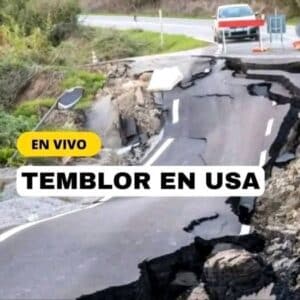Magnitude-5.4 Quake Jolts Southern California, Rattling Millions but Causing Limited Damage
Los Angeles, Calif., Monday — Residents across wide swaths of Southern California were jolted awake in the predawn hours Monday when a magnitude-5.4 earthquake struck along the notorious San Andreas fault system, underscoring the region’s perpetual vulnerability to seismic unrest.
According to the U.S. Geological Survey, the temblor hit at 3:18 a.m. local time. Preliminary data place the epicenter roughly 10 miles (16 km) northwest of the Coachella Valley in sparsely populated desert terrain where the Pacific and North American tectonic plates grind past each other.
A Sudden Jolt Felt for Miles
Although the quake was brief—lasting only 10 to 12 seconds—it was described by many as a sharp, rolling shock that rattled windows and set dogs barking from San Bernardino to San Diego.
“It felt like a freight train ran beneath the house,” said Linda Martinez, who lives near Palm Springs. “The rumble was deep, and everything shifted just once, but it was enough to send my heart racing.”
Hundreds took to social media within minutes, sharing pictures of fallen books, swinging light fixtures, and sloshing pool water. The California Office of Emergency Services (Cal OES) reported a spike of more than 80,000 “Did You Feel It?” entries on the USGS website before sunrise.
Precautionary Closures and Inspections
- Schools: Several districts in Riverside and San Bernardino counties canceled morning classes or delayed start times so engineers could inspect classrooms for plaster cracks, ceiling damage, or weakened masonry.
- Transportation: Caltrans crews performed “bridge sweeps” along Interstate 10 and State Route 60. No immediate structural concerns were found, and traffic disruptions were minimal.
- Hospitals & Utilities: Regional trauma centers switched to backup power for short periods, and Southern California Edison inspected substations for stress fractures. Service remained largely uninterrupted.
Emergency responders reported only minor injuries—mostly bumps or cuts from overturned items—and no fatalities. Authorities urged residents to check gas lines, secure heavy furniture, and refresh “go bags” in case of aftershocks, which are expected to continue throughout the week.
The Science Behind the Shake
Seismologists say Monday’s quake struck on a lesser-known strand of the San Andreas fault network, roughly 100 miles east of downtown Los Angeles. The tectonic boundary marks one of the world’s most studied plate interfaces, where the Pacific Plate creeps northwest past the North American Plate at about two inches (5 cm) per year.
Dr. Hannah Lee, a geophysicist at Caltech’s Seismological Laboratory, noted that while a magnitude-5.4 event is classified as moderate, its shallow depth—estimated at 7 miles (11 km)—allowed shaking to radiate efficiently:
“This is a classic reminder that even mid-range earthquakes can pack a punch when they occur beneath populated corridors.”
Researchers stress that Monday’s tremor neither increases nor decreases the long-term likelihood of the much-discussed “Big One,” a magnitude-7.8 or greater event expected somewhere along the southern San Andreas in coming decades. However, every quake offers valuable data for refining hazard models and emergency plans.
Preparing for What Comes Next
Cal OES Director Nancy Ward urged Californians to use the incident as motivation to update preparedness kits, practice drop-cover-and-hold drills, and download the state-endorsed “MyShake” early-warning app, which can deliver a few seconds’ notice before strong shaking arrives.
“Today we were fortunate,” Ward said at a morning press briefing. “But fortune favors the prepared. Make a plan, secure your space, and stay informed.”
Seismologists caution that aftershocks in the 3.0-to-4.0 range are likely over the next several days. Residents experiencing property damage or utility issues are encouraged to report them to local authorities and insurers promptly.
For live updates, preparedness resources, and a map of recent seismic activity, visit earthquake.ca.gov or follow @Cal_OES on social media.





